50 "Reasons" to Think About Your Spine
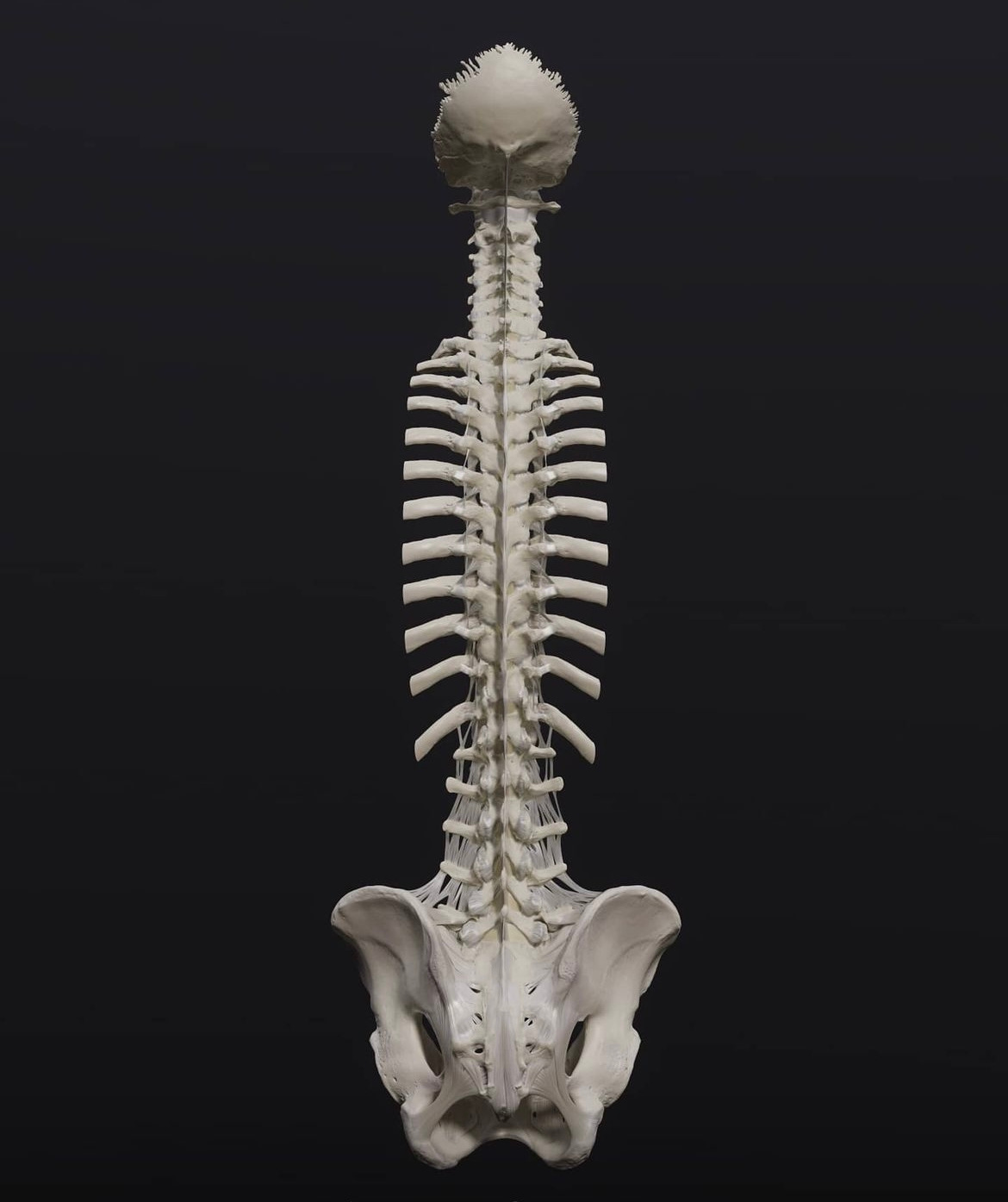
Sometimes, I feel like people misunderstand, undervalue, underappreciate, and ignore the spine—treating it like an ugly stepchild.
This cascade of dismissals denies the spine the justice it deserves. The spine is a very different beast compared to other joints in the body.
The spine is not a single structure but a dynamic network—a symphony of components connected by 50 articulating surfaces, joint capsules, connective tissue, and more. Its complex architecture is one that deserves profound respect.
Vertebral Segments of the Spine
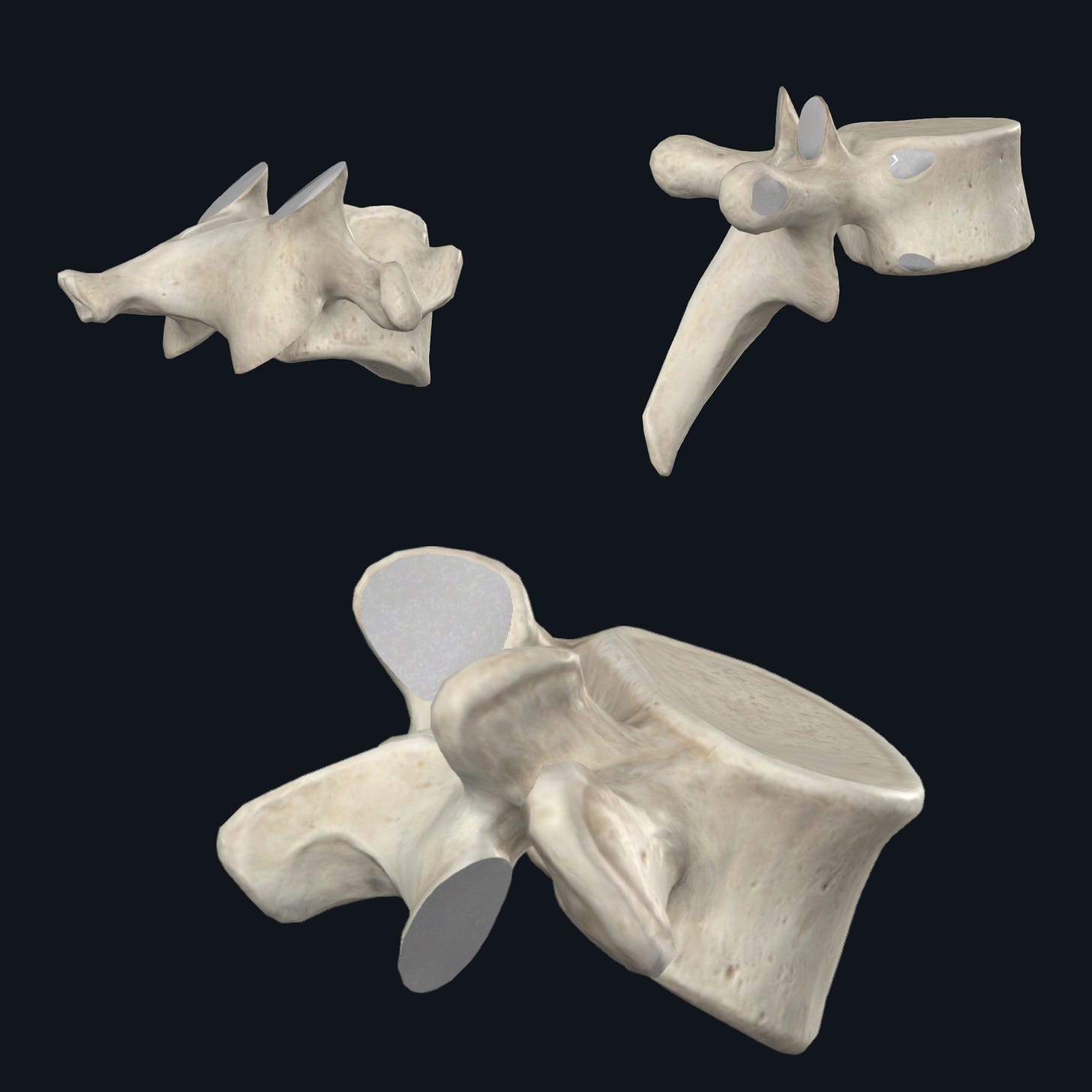
The images above are of 3 vertebrae. One from the cervical, one from the thoracic, and one from the lumbar spine. We have 24 vertebrae in total: 7 cervical, 12 thoracic, and 5 lumbar.
Articulating Surfaces
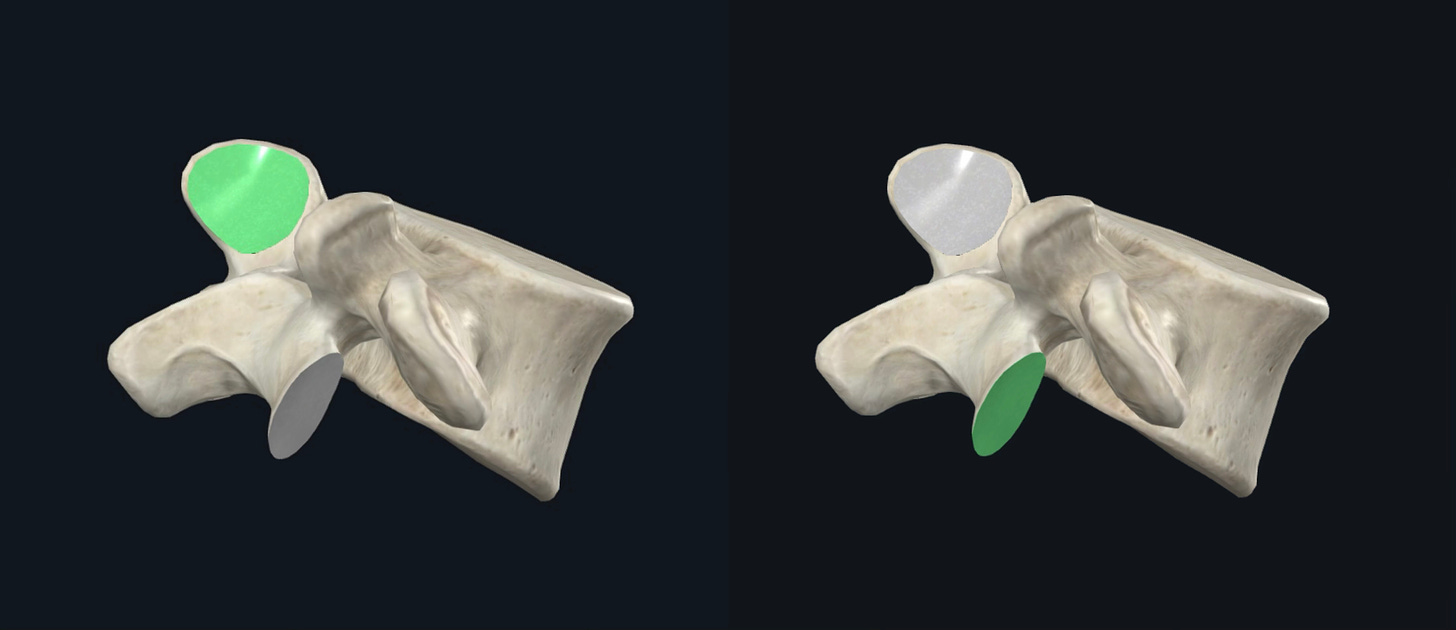
Each vertebra of the spine has four articulating surfaces: two superior and two inferior. These surfaces articulate with the corresponding inferior or superior facets of the vertebrae above or below.
Facet Joints and Articular Capsules
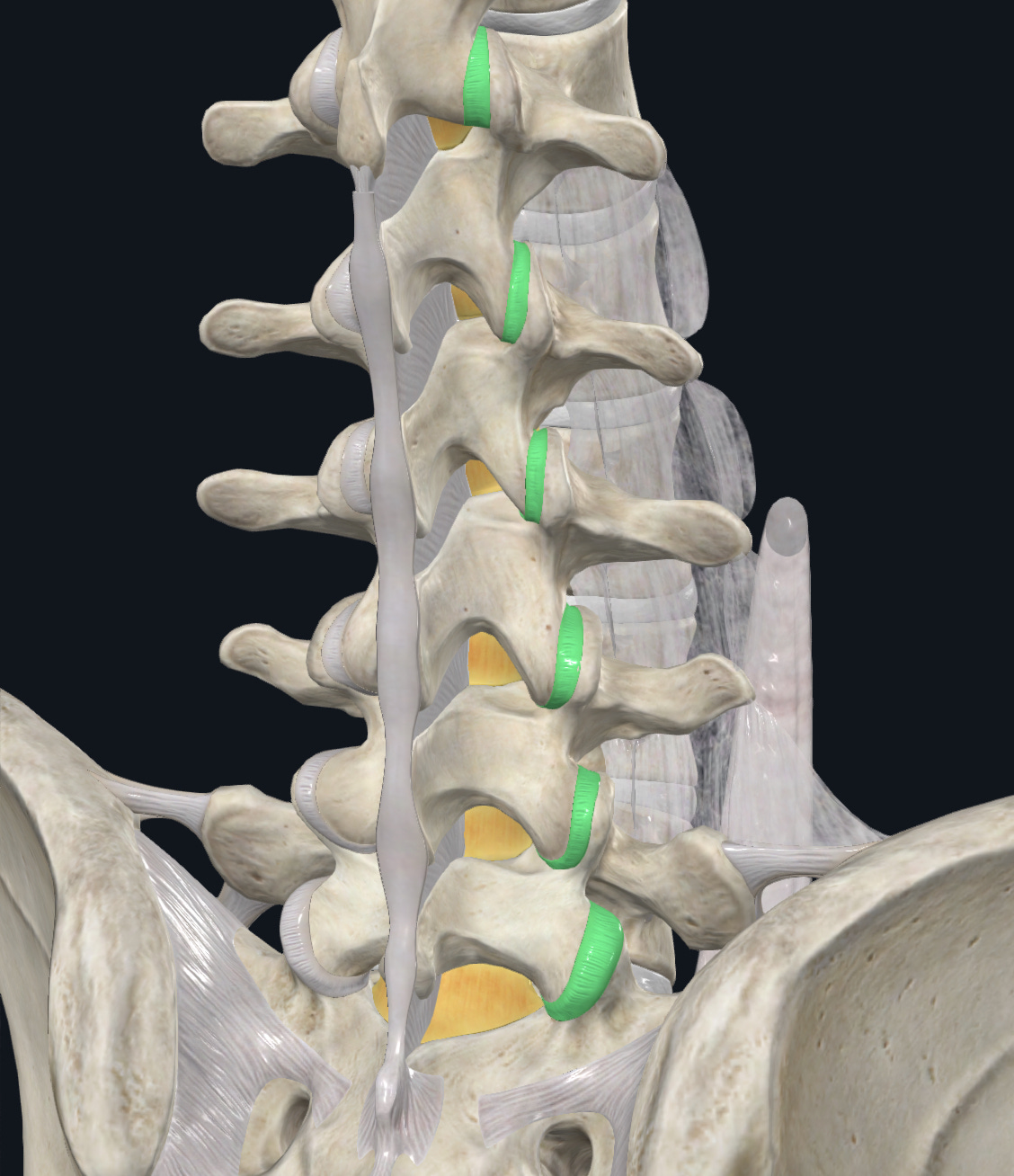
The facet joint capsules are made up of dense connective tissue that encapsulates the articulating surfaces of two vertebrae conjoined by a joint capsule that articulates or moves relative to one another. This tissue constrains the range of motion of the joint level.
“More Than Meets the Eye”
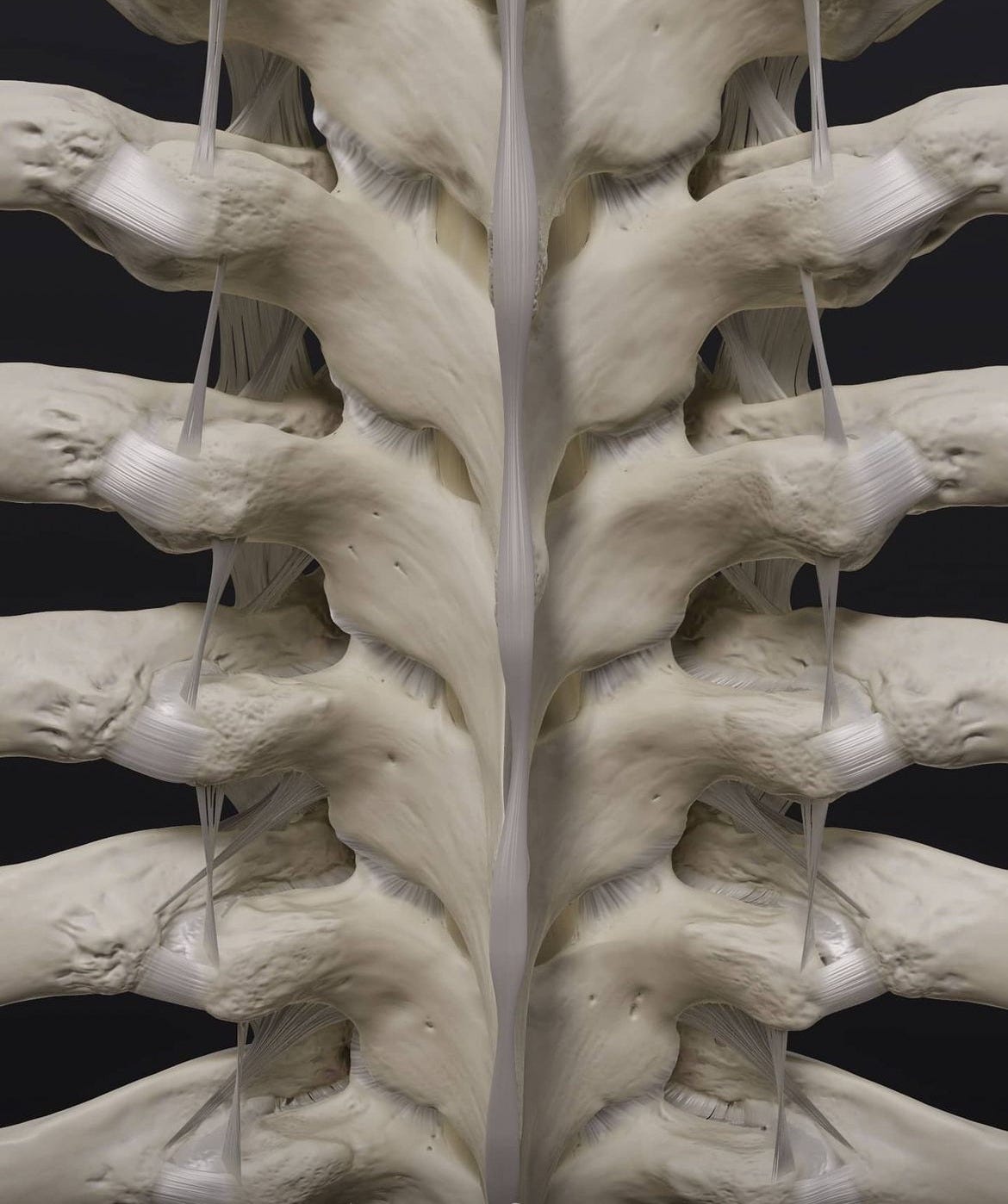
With four articulating surfaces per vertebra, that means the spine isn’t just a thing; it’s 50 joints if you include the articulating surfaces of the lumbar/sacrum and cervical/skull, each that have:
-
a capsule
-
joint workspace
-
connective tissue architecture
-
a load-bearing capacity
-
muscles that move the joints/spine.
And let’s not forget that each vertebra has a cartilaginous disc between them and joint space. Further, we must remember that the articulating facet joints/surfaces change shape depending on whether it is located in the cervical spine, thoracic, or lumbar spine. Take notice of the difference in angles and the direction the surfaces face from image 2. These changes reflect functional differences between areas of the spine.
For instance, due to the differences in shape between the cervical facets and the lumbar facets, the lumbar spine doesn’t rotate at individual segments like the cervical, thus behaving differently as a system.
Each of these elements is trainable and needs to be trained to maintain a healthy and long-lasting spine. Start using your spine with this simple exercise.
Final Thoughts
In conclusion, the spine is far more than a Jenga set of bones stacked atop one another; it’s a complex piece of evolutionary art. Each vertebra, joint capsule, articulating surface, and disc works in harmony to create a dynamic, robust structure unlike any other in the body. This “different beast” deserves attention and care beyond what’s typically afforded to it. By appreciating its unique complexity, structures, and functions, we can truly support the health and strength it provides every day.
Sign up and get a FREE video workout!
Plus get our free monthly video blog on accessing what you love most - your body and optimizing your joint health!


